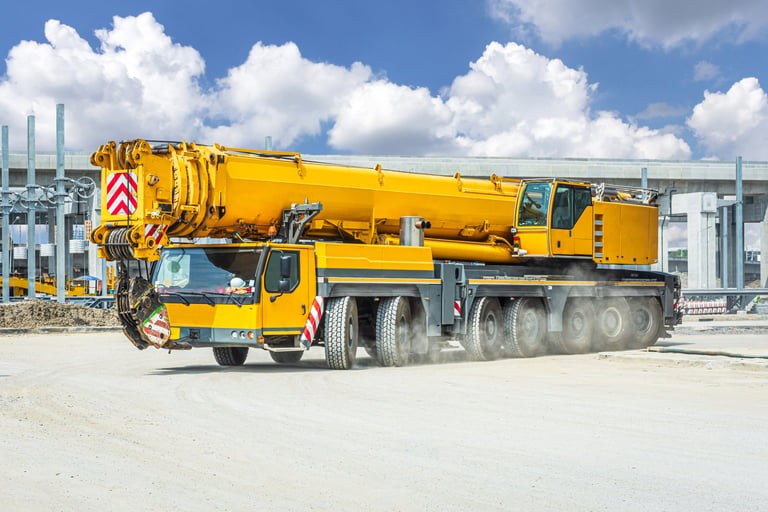We now deliver to UK & EU on DDP Terms - Get in touch on contact@exxelmet.com
Optimizing Crane Performance with Best Practices for Counterweights
In the world of construction and heavy machinery, ensuring the stability and performance of cranes is paramount. Our latest post delves into the critical role of counterweights, including cast iron counterweights and clump weights for cranes, and outlines best practices for their use. #CraneCounterweights #CranePerformance #HeavyMachinery #Construction #Engineering #Safety
COUNTERWEIGHT
Rupesh Madhogaria
7/21/20232 min read
Introduction
In the construction and heavy machinery industries, the use of counterweights is crucial for ensuring the stability and efficiency of cranes. Whether you are dealing with cast iron counterweights or specialized clump weights for cranes, implementing best practices can significantly enhance operational safety and performance. This article delves into the importance of crane counterweights, focusing on best practices that can help your business optimize crane performance and safety.
Understanding Crane Counterweights
Counterweights are essential components of cranes, providing the necessary balance to counteract the weight of the load being lifted. They prevent the crane from tipping over, ensuring safe and stable operations. The types of counterweights commonly used include:
Cast Iron Counterweights: Known for their durability and high density, cast iron counterweights are a popular choice in the industry.
Clump Weights for Cranes: These are modular weights that can be added or removed as needed to adjust the counterbalance.
Best Practices for Using Crane Counterweights
1. Accurate Weight Calculation
Before deploying any crane, it is critical to accurately calculate the required counterweight. This involves understanding the crane’s load capacity and the weight of the materials being lifted. An incorrect calculation can lead to operational inefficiencies or, worse, accidents.
Use precise measurements of load weight and distribution.
Consult crane load charts to determine the appropriate counterweight.
2. Regular Maintenance and Inspection
Regular maintenance and inspection of counterweights are essential to ensure their integrity and performance. This includes checking for any signs of wear, corrosion, or damage.
Schedule routine inspections to identify and address issues early.
Maintain detailed records of inspections and maintenance activities.
3. Proper Installation and Securing
Ensuring that counterweights are properly installed and securely fastened is vital for safe crane operations. Improper installation can lead to shifting weights and increased risk of accidents.
Follow manufacturer guidelines for installation.
Use appropriate securing mechanisms to prevent movement during operation.
4. Customization and Modularity
Opt for modular counterweight systems that allow for easy adjustment based on the specific needs of a project. This flexibility can enhance operational efficiency and safety.
Utilize clump weights for cranes for easy customization.
Consider investing in modular counterweight systems that can be adapted for different load requirements.
5. Training and Safety Protocols
Ensure that crane operators and maintenance personnel are adequately trained in handling and managing counterweights. Safety protocols should be strictly followed to mitigate risks.
Provide comprehensive training on counterweight management.
Implement strict safety protocols to guide operations.
Benefits of Optimized Counterweight Practices
Enhanced Safety
Implementing best practices for crane counterweights significantly enhances the safety of crane operations. Accurate weight calculations and proper installation reduce the risk of tipping accidents.
Improved Efficiency
Efficient counterweight management leads to smoother crane operations, minimizing downtime and improving overall project efficiency. Modular counterweight systems allow for quick adjustments, enhancing flexibility.
Cost Savings
Regular maintenance and inspections help in identifying potential issues before they become costly problems. Proper counterweight management also extends the lifespan of the equipment, reducing the need for frequent replacements.
Conclusion
Incorporating best practices for the use of counterweights, cast iron counterweights, and clump weights for cranes is essential for optimizing crane performance and safety. By focusing on accurate weight calculations, regular maintenance, proper installation, customization, and training, businesses can achieve enhanced safety, efficiency, and cost savings. Adopting these practices not only ensures compliance with safety regulations but also contributes to the overall success of construction and heavy machinery operations.
For additional information on our cast iron counterweights and how they can benefit your specific application, get in touch with us on contact@exxelmet.com, or fill up the contact form


Copyright © 2025 Exxelmet
P-200, Benares Road, P. O. Netajigarh, Howrah, West Bengal, India. Pin Code 711108
Tel: +91 98311 11541
Email: contact@exxelmet.com
